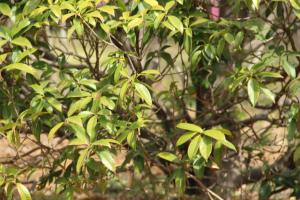Can a Planter Be Used Without a Pot?
Planters are fantastic additions to any garden or living space. They offer an easy way to add a touch of greenery to your surroundings, allowing you to create a more natural and earthy atmosphere. However, when it comes to planters, many people wonder whether it's possible to use them without a pot. The answer is yes, but there are a few things you need to consider.
What Is a Planter?
A planter is a decorative element that is designed to hold plants. Typically, planters are made from materials like ceramic, metal, or plastic, and they come in a wide range of shapes, sizes, and styles. Some planters are designed to hang from the ceiling or walls, while others sit on the ground or a surface like a tabletop. Regardless of their design, planters are an excellent way to display plants and can be used for indoor or outdoor gardening.
Can a Planter Be Used Without a Pot?
Yes, a planter can be used without a pot, but it's important to understand the implications of doing so. When you use a planter without a pot, you will need to make sure that you have good soil drainage, as excess water can build up in the bottom of the planter and cause the roots of your plants to rot. Additionally, you will need to make sure that you use a planter with suitable materials that can withstand the elements if placed outdoors.
What Are the Benefits of Using a Planter Without a Pot?
One of the primary benefits of using a planter without a pot is that it provides a natural look and feel to your garden or living space. Without the barrier of a pot, your plants are allowed to grow and breathe more freely, enabling them to thrive more effectively. Additionally, using a planter without a pot also provides an opportunity to experiment with different plant combinations, creating a more diverse and interesting garden or living space.
How Do You Use a Planter Without a Pot?
When using a planter without a pot, it's important to ensure that your soil has adequate drainage. Some planter designs come with built-in drainage holes, allowing excess water to escape. However, if your planter does not have built-in drainage, you can create drainage holes yourself by drilling a few holes in the bottom. After you've added the soil, it's important to monitor your plants for any signs of over-watering, which can lead to root rot and other issues. Finally, keep in mind that weather can impact your plants if you place your planter outside. You may need to adjust your planter's placement during inclement weather or provide additional protection to keep your plants safe and healthy.
In Conclusion
Although a planter can be used without a pot, it's important to understand the implications of doing so before you get started. With proper soil drainage, appropriate materials, and careful monitoring, a planter without a pot can be a great way to add a touch of natural beauty to your garden or living space.

 how many times do yo...
how many times do yo... how many planted tre...
how many planted tre... how many pine trees ...
how many pine trees ... how many pecan trees...
how many pecan trees... how many plants comp...
how many plants comp... how many plants can ...
how many plants can ... how many plants and ...
how many plants and ... how many pepper plan...
how many pepper plan...





























